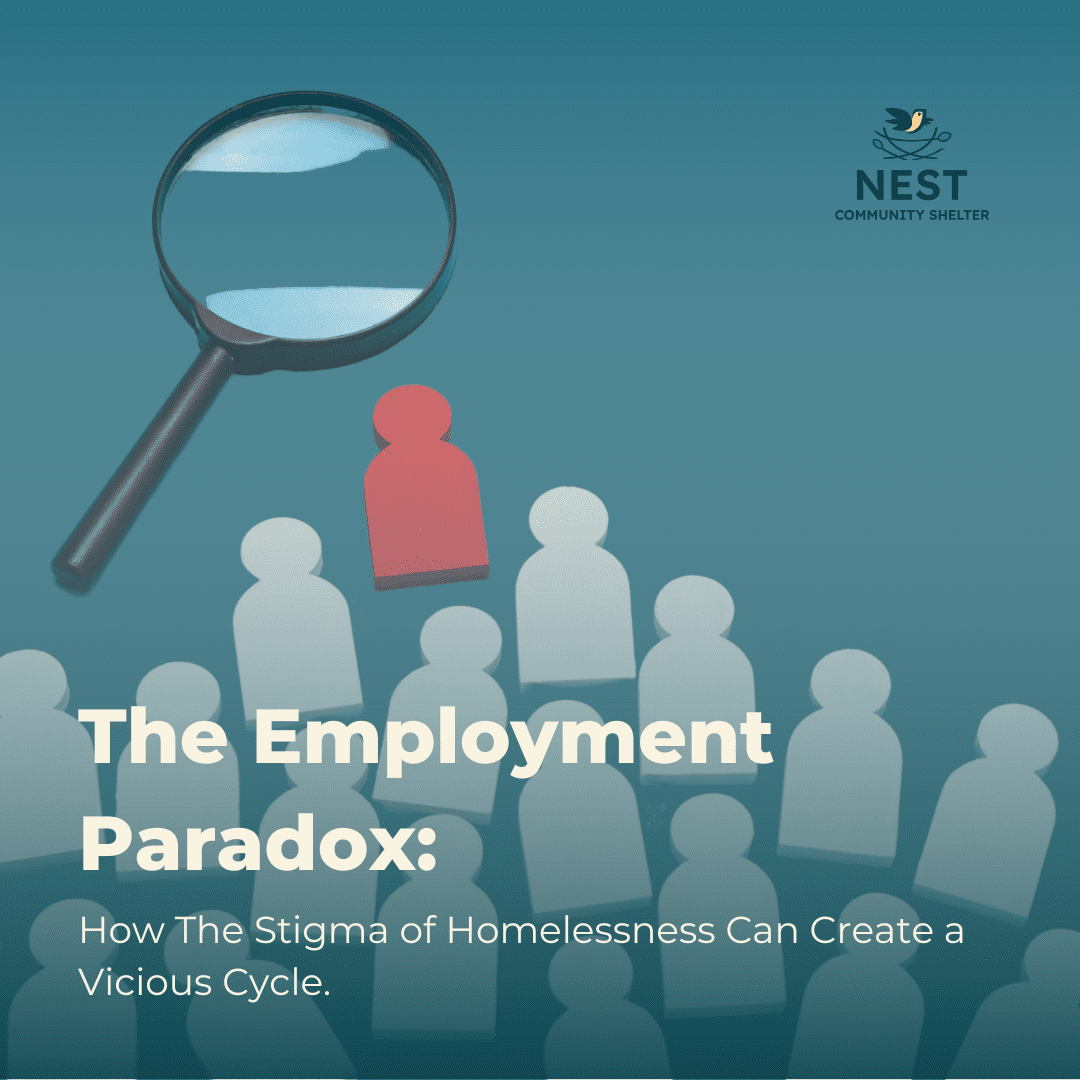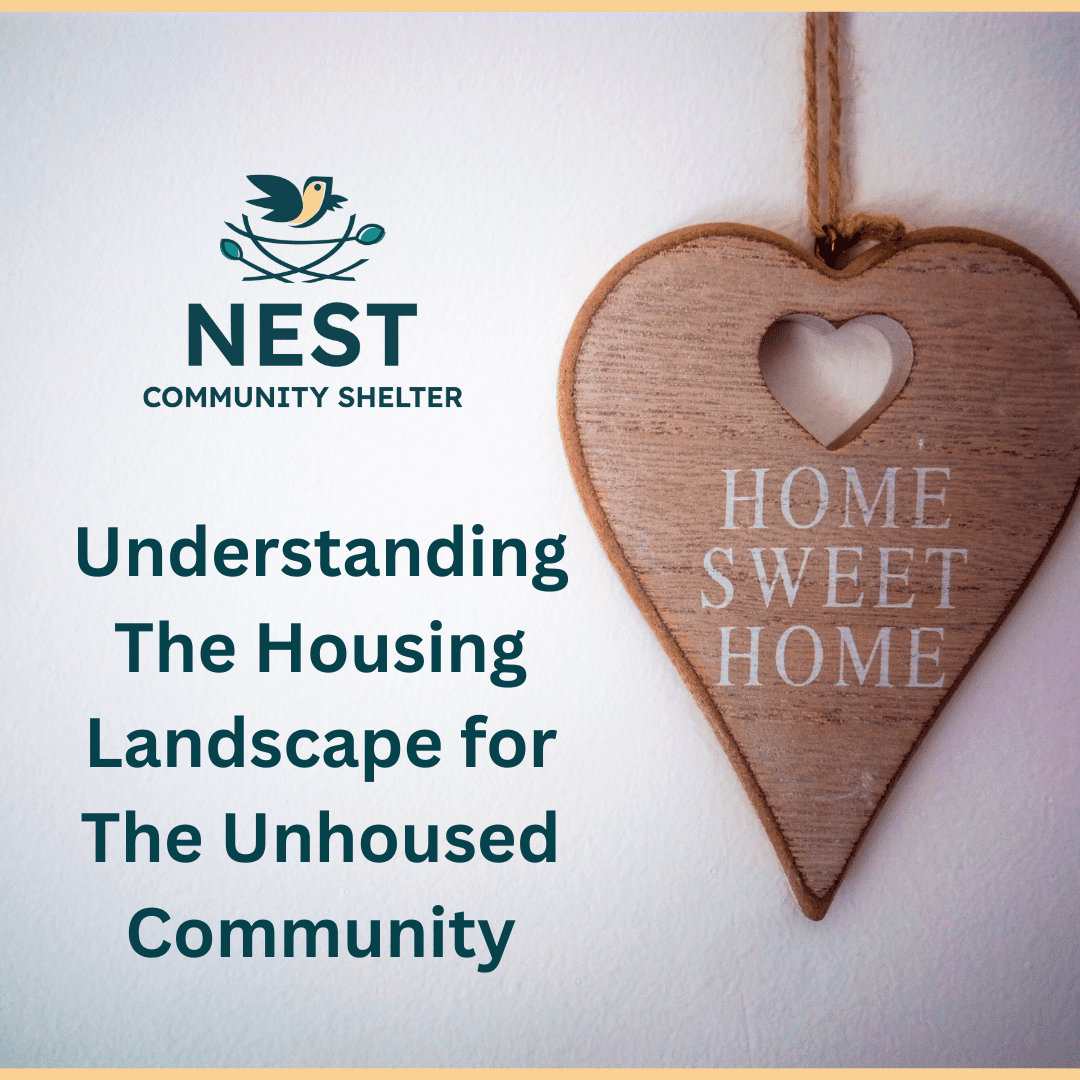
This month, we’ve explored the complex relationship between employment and homelessness. We’ve examined multiple challenges that individuals experiencing homelessness face when obtaining and maintaining employment. We’ve discussed the practical barriers: lack of transportation, no permanent address, limited access to hygiene facilities, and equal access to skills and upskilling that affect job performance. Today, we tackle perhaps the most insidious obstacle of all as we cap off this month’s topic: stigma.
The paradox is both simple and devastating: To leave homelessness, one typically needs stable employment, yet many employers are reluctant to hire someone who is experiencing homelessness for various reasons, which we will examine further in this blog post. This creates a vicious cycle that traps individuals in their current circumstances through no fault of their own.
Consider this completely fictitious scenario built from familiar stories that we see all too often at Nest Community Shelter:
James has been living in his car for three months after losing his apartment following a medical emergency that drained his savings. He’s qualified for numerous positions, but their demeanor changes when potential employers learn of his living situation (which becomes evident when they request an address or notice he’s wearing the same clothes repeatedly). They begin to question his reliability, character, and capabilities—not based on evidence but on preconceptions about homelessness. Many see James’ situation as a moral failing, not a victim of circumstances beyond James’ control.
This scenario, many like it, happens countless times daily across the country and in our community. The stigma surrounding homelessness is so powerful that it often overrides all other qualifications an individual might possess.
These judgments stem from persistent myths about homelessness: the belief that people choose to be homeless or could easily choose not to be; the assumption that homelessness results from laziness, addiction, or moral failings; the presumption that someone experiencing homelessness lacks skills or intelligence; and the fear that people experiencing homelessness are inherently violent or unpredictable. We work with individuals experiencing homelessness every day, and we know that this is not true. Each individual is complex and has a story that led them to our door; no two individuals are the same, nor are the root causes of how they found themselves at our shelter.
Research consistently debunks these myths. Most individuals experiencing homelessness are there due to economic hardship, housing crises, medical bankruptcies, domestic violence, or mental health challenges that went untreated due to lack of access to care—not personal failings.
For jobseekers experiencing homelessness, stigma creates barriers at every step of the employment process. At the application stage, they face challenges like not having a permanent address to list, gaps in employment history due to housing instability, limited access to professional clothing, and a lack of a reliable phone number or email access. During interviews, they may face judgment based on appearance, questions about stability and reliability, implicit bias affecting interviewer perceptions, and transportation challenges, making punctuality difficult.
Beyond the obvious economic impact, stigma carries psychological tolls. This internalized stigma can lead to diminished self-worth, depression, and eventually, giving up on the job search altogether—further entrenching the cycle of homelessness.
Fortunately, programs across the country demonstrate that people experiencing homelessness can become valuable employees with the proper support. When employers understand that homelessness is a circumstance, not a character trait, they make more equitable hiring decisions.
We encourage all employers to examine their biases and consider whether their hiring practices inadvertently discriminate against people experiencing homelessness. Focus on skills and potential, judging candidates’ abilities, not their circumstances. Offering flexibility, such as providing advance pay for transportation or uniforms, can help immensely and make all the difference. Partner with support organizations, many of which will provide ongoing support to the employee and employer. Create a supportive environment where your workplace culture doesn’t perpetuate stigma.
As community members, we can challenge stigmatizing language, support businesses with inclusive hiring practices, advocate for policy change, and volunteer with employment programs. Terms like “the homeless” reduce people to their housing status; using “people experiencing homelessness” instead acknowledges the temporary nature of their situation and maintains their humanity.
The employment homelessness paradox is not insurmountable; we see this daily at Nest Community Shelter and through our work with community partners. By recognizing and actively combating the stigma that fuels it, we can create pathways to meaningful employment for everyone, regardless of their housing status. When we see people for their potential rather than their circumstances, we not only help individuals escape homelessness—we strengthen our entire community and economy with the contributions of people who may have been systematically excluded.
The question isn’t whether people experiencing homelessness can be valuable employees. They already are. The question is whether we’ll let stigma continue to mask that truth.
This post concludes our month-long series on employment and homelessness. Thank you for exploring this critical issue with us. If you’d like to learn more about how you can help break the support of those experiencing homelessness, we encourage you to look around on our website for additional resources or get involved with our shelter through many of our volunteer opportunities.



